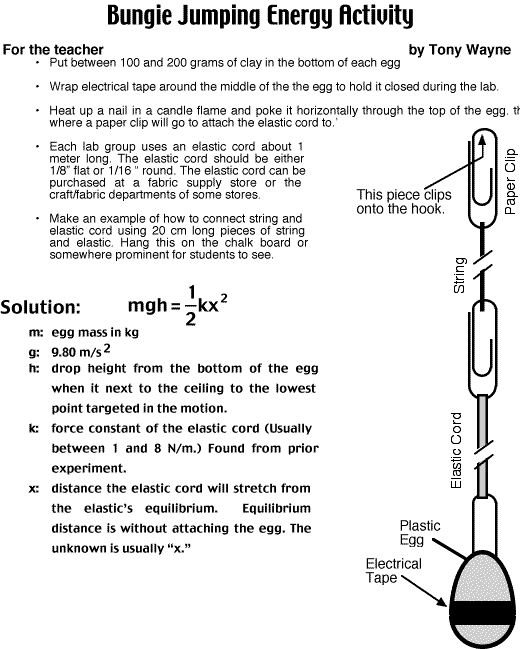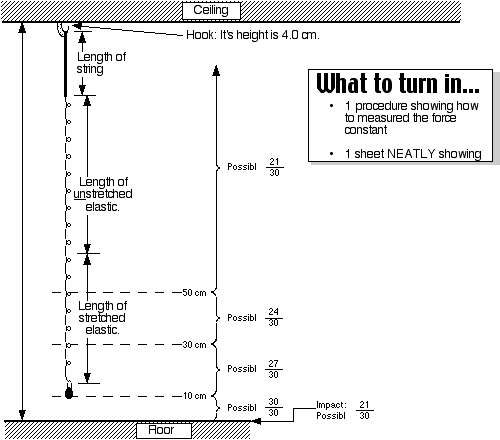 VIP’s mission is to foster communication among teachers of physics and physical science as well as to provide unique learning experiences for teachers and their students. Click here to go to the main page for the Virginia Instructors of Physics Next Meeting September 23, 2000, at the Virginia Science Museum 2500 West Broad Street, Richmond Virginia Click
here for directions
Sept. 23rd at the Science Museum of Virginia in Richmond
|
|
Andy Jackson |
ajackson@harrisonburg.k12.va.us or |

As always for VIP, there are no fees and there are no dues. What makes the group succesful are the contributions of its members, not financially but intelectually. Please consider sending me your favorite labs, demos, or lessons to include in the next newsletter. Also strongly consider presenting at VAST this November.
The Science Museum of Virginia is located in mid-town Richmond, Virginia, at 2500 West Broad Street in the historic Broad Street Station designed by renowned architect John Russell Pope. The Science Museum of Virginia is easily reached via Interstate 95 and Interstate 64.
From the north or west:
From the south or east:
There is ample free parking adjacent to the museum.
If you plan to cross the I-95 James River bridge to reach the Science Museum, you may want to check the current status of renovation construction work on the bridge at this VDOT web site: http://www.95bridge.com/
Hi again! It's hard to believe the summer is gone already. Several interesting things are happening with VIP since our spring meeting at UVA. One of the most exciting is our new list serve! Ron Revere created a group for VIP on e-groups (thanks Ron!). Point your browser to http://www.egroups.com/group/va-inst-phys and come join us! It's a work in progress so come help make it be what you need. We have the ability to post messages, conduct polls, keep a calendar of VIP events, chat and more. Correct and creative use of this list serve could be a huge benefit to all of us involved with physics education. This is the nearly instantaneous version of what VIP has been all about these last 14 years or so - fostering communication between teachers of physics and physical sciences.
Another great way to gather up some fabulous ideas is to visit the VIP website. Tony Wayne has been busy moving us from our previous place on VaPen to a new location which is http://www.geocities.com/vipphysics/. As Tony continues to work on this location you may also wish to visit us on the VaPen location of http://www.pen.k12.va.us/Pav/Science/Physics/ where you'll find lots of links and our previous newsletters full of great labs, demos & lesson ideas. Thanks for all the hard work Tony!
Two other new things for VIP you saw on page one. We are being hosted at the Science Museum of Virginia. I wanted a chance for us to get together a little earlier in the year for a Kick-of-the-Year-Right kind of meeting. Jeff Liverman from SMV and I are working out the details. I hope it will be an energizing visit to a great State resource and the forging of a new partnership for VIP. Thanks Jeff for all you are doing for us. The second new twist on VIP will be at the VAST meeting. At the Spring VIP meeting it was agreed upon (unanimously as always - we're such an agreeable bunch!) that in addition to our regular 2 hour session at VAST, we would also present a one hour "table top physics" session, where the audience could just come in, look, learn and leave as they wish. It will make for an exciting format and it will require many presenters and a bit of planning. Come to Richmond with some thoughts of what you may like to present.
I hope your school year starts off great whether it's your first time at the front of the class or your 31st! I look forward to seeing you in Richmond. It should be a great meeting and a great opportunity for a behind the scenes look at the museum. PLUS the Imax film "Amazing Journeys" to boot!
With best regards,
Andy
The exercise below serves two purposes. In my class the students make frequent use of Vernier's Graphical Analysis. This exercise provides an introduction to the software. It gives the students hands on practice inputting numbers, titling the columns, and fitting best fit curves and lines. They can then use the printed & electronic versions of this exercise through the year when trying to understand "directly proportional", "inverse square" and those other foreign terms we physics types use. This is ungraded and I provide as much help as needed to ensure each student can do everything correctly. - Andy Jackson
I will provide you with a printed version of the graphs, equations, and tables.

Bungie jumping is a sport enjoyed by some daring individuals. It consists of a person hurling him or herself from a perfectly stable bridge, balloon, or platform with only an elastic cord to impede the otherwise inevitable impact with ground or riverbed. The person must possess the faith that the elastic material will be able to absorb the potential energy of the fall without breaking, and that the point at which the material absorbs this energy is at a positive vertical value (i.e. above the ground).
The design of such a thrill involves calculating the point at which the gravitational potential energy lost during the jumper's fall will equal the elastic potential energy (similar to a spring) gained by the elastic cord. To ensure maximum thrill this point is designed to be as close to the ground as safely possible.
Your task is to provide a cheep thrill for some plastic eggs using an elastic cord, a plastic egg, and a length of string. You must calculate the length of string that will give the maximum enjoyment. (If your elastic cord is too long, you may reduce the weight of your egg. To assist in your design task you may also use a meter stick, a spring scale, and a mass balance. Also the following diagram summarizing the task may be of assistance. Prior to the jump, you must provide assurance to the jump master that your calculations and subsequent design will provide a safe trip for your client.
The string is attached to the hook in the ceiling. The bungie cord is attached to the string. The top of the paper clip at the egg's top will touch the ceiling when dropped. Grades will be based on how close you come to the floor without touching the floor. See the diagram below. The rest of your score comes from how well you do and show your calculations. Your jump will be at the end of the period. You can take up to 2 jumps. The best score will be yours

A special thanks to VASTfor hosting our web site. |
||